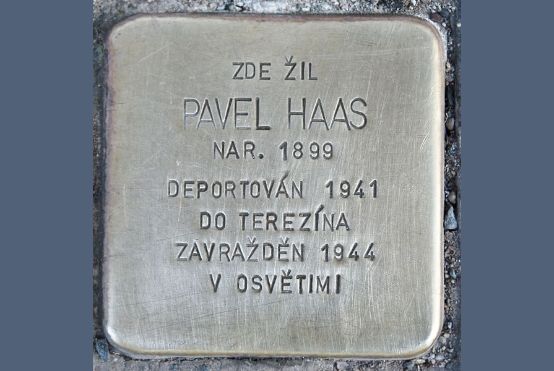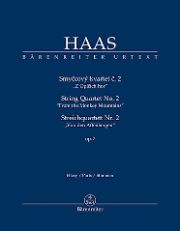Contemporary orientation
The String Quartet No. 2 "Von den Affenbergen" by Pavel Haas, who was murdered in Auschwitz in 1944, is one of the most important contributions to the genre in classical modernism.

Some of the last deportation trains to the Auschwitz extermination camp came from the Bohemian ghetto of Theresienstadt. On October 16, 1944, they contained many of the extras, artists and children who had been abused as part of this inhuman lie in what was probably the Nazis' most cynical propaganda film. It showed the supposedly perfect world of the Jewish "model camp" near Prague. In Theresienstadt or The Führer gives the Jews a city also features Pavel Haas, who was born in Brno in 1899, died on October 18, 1944 and was one of the most important musical personalities in Leoš Janáček's circle. Created in the ghetto Study for string orchestrawhich was premiered during a beautifully colored visit by the International Committee of the Red Cross in the summer of 1944 under Karel Ančerl, can be heard in the film. The latter was the only one of his family and almost all of the actors in the film to survive Auschwitz.
In a new edition published by Bärenreiter Prague, one of Pavel Haas' most important works, the String Quartet No. 2 From the monkey mountains has been published. The equally outstanding Wind Quintet op. 10 will also be published there in June 2021. In Haas' string quartet oeuvre, which comprises three works in total, this opus 7 from 1925 is the easiest to understand. It is characterized by an exuberant colourfulness that clearly approximates Janáček's individual overcoming of late romanticism by compressing thematic elements to their nucleus, but at the same time develops a strong personality of its own. The typical folk element of the Bohemian tradition makes a brilliant appearance in the last movement, "Wilde Nacht", which Haas has added ad libitum with a percussion part. "Die Kutsche, der Kutscher und das Pferd" (The coach, the coachman and the horse) is also full of humor, in which Haas vividly and deliciously depicts the creaking of the coach and the stubborn neighing of the horses. The introductory movement "Landschaft" and the slow movement "Der Mond und ich" are mystical, impressionistic, highly expressive and very demanding for the performers.
Although the formal and technical realization of the complete work does not quite come close to Janáček's two quartets, it is undoubtedly one of the most important contemporary contributions to the genre up to 1945. Furthermore, it is an extremely effective work in concert and on CD, as I can testify from my own experience (recording in 1997 with the Casal Quartet). At that time we still had to make do with the handwritten and partly faulty edition by Tempo Praha/Bote & Bock. The flawless Bärenreiter Urtext edition elevates Haas' String Quartet No. 2 to the first rank of classical modernism. This is also a victory for art over the Nazi murderers' deluded idea of exterminating everything Jewish.
Pavel Haas: String Quartet No. 2 op. 7 "Von den Affenbergen" with percussion ad libitum, edited by Ondrej Pivoda; parts: BA 11525, € 29.95; study score: TP 525, € 23.50; Bärenreiter, Prague








